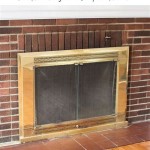East Coast Fireplace: A Guide to Styles, Selection, and Maintenance
The East Coast, with its rich history and diverse architectural styles, presents unique considerations when selecting and maintaining a fireplace. From the colonial homes of New England to the brownstones of New York City and the coastal properties of the Mid-Atlantic, the fireplace serves as more than just a source of heat. It is often a focal point, contributing to the aesthetic and character of the home. This article provides a comprehensive guide to understanding the nuances of East Coast fireplaces, covering styles, selection criteria, and crucial maintenance practices.
For centuries, fireplaces have been integral to East Coast living. Early settlers relied on them for cooking, heating, and light. Over time, fireplace design evolved, reflecting changing architectural trends and technological advancements. Today, homeowners have a wide range of options available, from traditional wood-burning fireplaces to modern gas and electric models. Understanding the different styles and their suitability for specific homes is essential for making an informed decision.
The selection process involves several key considerations, including the home's architectural style, the desired level of heating efficiency, fuel availability, and local regulations. Maintaining a fireplace is equally crucial for ensuring its safe and efficient operation. Regular cleaning, inspections, and repairs are necessary to prevent hazards and extend the lifespan of the fireplace.
Understanding East Coast Fireplace Styles
The East Coast boasts a diverse range of architectural styles, and fireplace designs often reflect these variations. Traditional styles include the classic brick fireplace, often found in colonial and Federal-style homes. These fireplaces are typically characterized by their simple, elegant designs and substantial size. The focus is often on functionality, providing ample heat for the home.
In Victorian-era homes, fireplaces tend to be more ornate, featuring intricate carvings, decorative tiles, and marble surrounds. These fireplaces are often designed to be decorative focal points rather than primary heating sources. The use of cast iron and other decorative metals is also common in Victorian fireplaces.
Brownstones, prevalent in cities like New York and Boston, often feature fireplaces with marble mantels and decorative inlays. These fireplaces are typically smaller than those found in colonial homes, reflecting the more compact living spaces of urban dwellings. The design often incorporates elements of both classic and contemporary styles.
Coastal properties may feature fireplaces with a more relaxed, natural feel. Stone fireplaces, often incorporating local materials such as river rock or fieldstone, are common in these settings. These fireplaces can blend seamlessly with the surrounding landscape, creating a cozy and inviting atmosphere.
Modern fireplace designs are becoming increasingly popular on the East Coast, especially in contemporary homes and renovations. These fireplaces often feature clean lines, minimalist aesthetics, and advanced technologies such as remote controls and energy-efficient burners. Gas and electric fireplaces are particularly common in modern designs, offering convenience and ease of use.
Key Considerations for Fireplace Selection
Choosing the right fireplace for an East Coast home involves careful consideration of several factors. The home's architectural style is a primary consideration, as the fireplace should complement the existing design. A modern fireplace may look out of place in a historic colonial home, while a traditional brick fireplace might seem too bulky in a contemporary setting.
Heating efficiency is another important factor to consider. Traditional wood-burning fireplaces can be inefficient, losing a significant amount of heat up the chimney. Gas and electric fireplaces tend to be more energy-efficient, providing more consistent heat with less waste. Consider the primary purpose of the fireplace: is it intended as a primary heating source, or simply for ambiance and occasional use?
Fuel availability is also a crucial factor, particularly for wood-burning fireplaces. Access to a reliable source of firewood is essential, and the cost of firewood can vary depending on the region. Gas fireplaces require a connection to a natural gas line or a propane tank, while electric fireplaces simply require an electrical outlet.
Local regulations and building codes are another important consideration. Many East Coast municipalities have specific regulations regarding fireplace installations, including venting requirements, safety standards, and emissions limits. It is crucial to consult with local authorities and obtain the necessary permits before installing a fireplace.
The size of the room is also a factor. A large fireplace may be overwhelming in a small room, while a small fireplace may be insufficient for heating a large space. Consider the scale of the fireplace in relation to the room and choose a size that is proportionate and functional.
Finally, budget is an important consideration. The cost of a fireplace can vary widely depending on the style, materials, and installation requirements. Obtain quotes from multiple contractors and compare prices to ensure that you are getting the best value for your money.
Maintenance and Safety Practices for East Coast Fireplaces
Regular maintenance is essential for ensuring the safe and efficient operation of an East Coast fireplace. Creosote buildup in the chimney is a major fire hazard, and annual chimney sweeps are recommended to remove this accumulation. A professional chimney sweep can also inspect the chimney for cracks, damage, or other potential problems.
Inspect the fireplace regularly for signs of damage, such as cracks in the firebox, loose bricks, or damaged dampers. Repair any damage promptly to prevent further deterioration and ensure safe operation. The damper should be checked regularly to ensure that it opens and closes properly, preventing heat loss when the fireplace is not in use.
For wood-burning fireplaces, use only seasoned, dry firewood. Wet or green wood produces more smoke and creosote, increasing the risk of chimney fires. Store firewood in a dry, well-ventilated area away from the house to prevent insect infestations and rot.
When using a wood-burning fireplace, always use a fire screen to prevent sparks and embers from escaping the firebox. Never leave a fire unattended, and make sure that the fire is completely extinguished before leaving the house or going to bed.
For gas fireplaces, schedule regular inspections by a qualified technician to ensure that the gas lines, burners, and pilot lights are working properly. Carbon monoxide detectors should be installed in the home to detect any leaks from the gas fireplace.
Electric fireplaces require less maintenance than wood-burning or gas fireplaces, but they should still be inspected regularly for signs of damage. Check the electrical connections and wiring to ensure that they are in good condition. Clean the fireplace regularly to remove dust and debris.
Regardless of the type of fireplace, it is essential to follow all manufacturer's instructions for operation and maintenance. Consult with a qualified fireplace professional for advice and guidance on proper maintenance practices.
Proper ventilation is crucial for any fireplace. Ensure that the chimney is clear of obstructions and that the damper is functioning correctly. Insufficient ventilation can lead to smoke buildup in the home and increase the risk of carbon monoxide poisoning.
Educate all members of the household on fireplace safety practices, including how to properly operate the fireplace, how to extinguish a fire, and what to do in case of a chimney fire. Keep a fire extinguisher readily available near the fireplace.
By following these guidelines, East Coast homeowners can enjoy the warmth, beauty, and ambiance of their fireplaces safely and efficiently for years to come. Selecting the right style and committing to regular maintenance are key to maximizing the benefits and minimizing the risks associated with fireplace ownership.

East Coast Fireplace 25 Reviews 313 State Rte 33 E Manan New Jersey Services Phone Number Yelp

East Coast Fireplace 25 Reviews 313 State Rte 33 E Manan New Jersey Services Phone Number Yelp

Fireplaces East Coast Stoves

Eastcoastmantels

Eastcoastmantels

Shingle Style Midwest Home Features East Coast Traditional Details Transitional Living Rooms White Fireplace

Eastcoastmantels

Eastcoastmantels

Eastcoastmantels Cast Stone Fireplace Mantel

Classic East Coast Shingle Style Lakeside Cottage Small Family Room Design Homes








